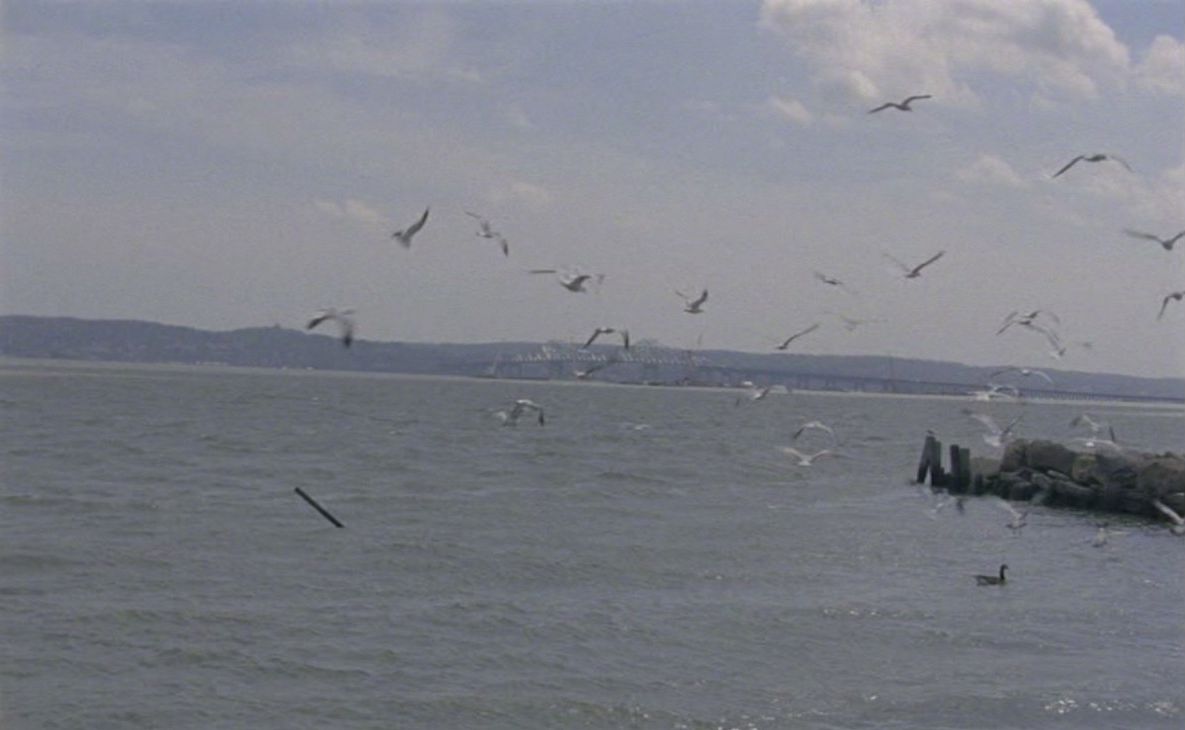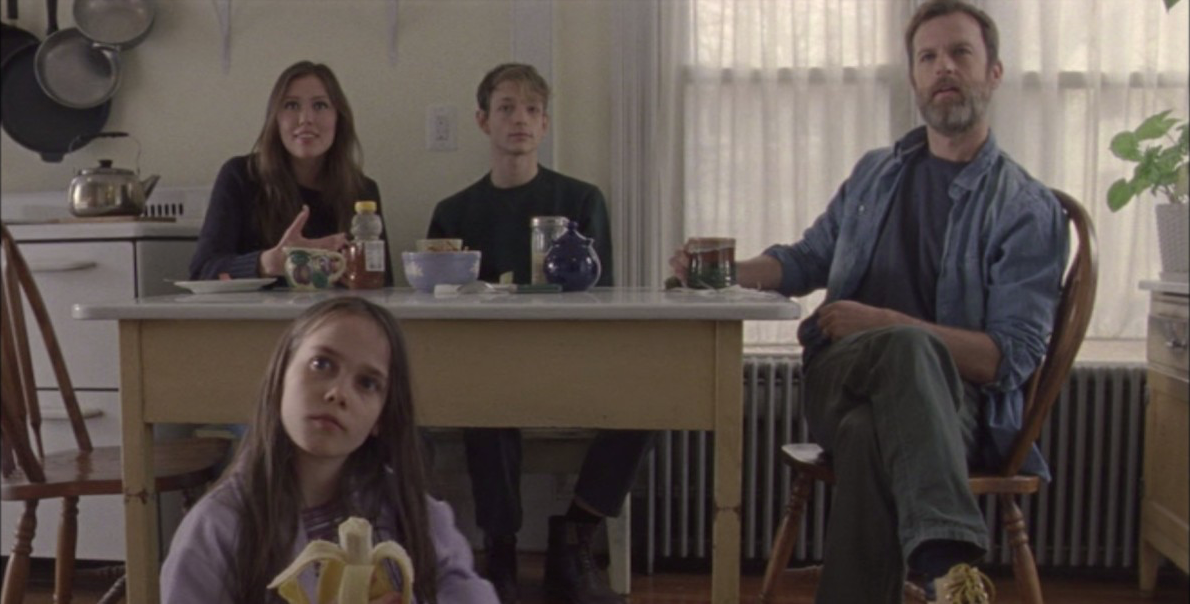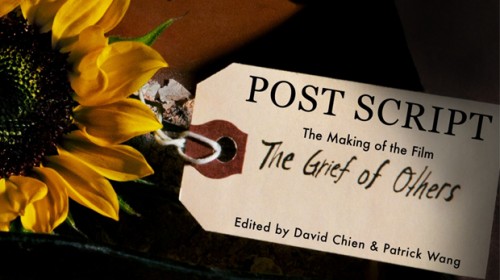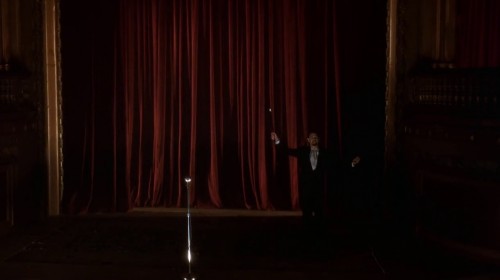Cet article fait partie d’un cycle
Director Patrick Wang traveled to visit the Café des Images on August 27th for a Q & A after the screening of The Grief of Others. French writer Arno Bertina attended the screening and felt his own work was very connected to what he saw. Here is how.
The following text is a translation of the original French version.
Sometimes you appreciate in other people what you have not experienced, the way in which this or that person resists, sometimes you like what draws a common space between you and that person, a certain relationship to the world for instance, or a similar yearning for a world yet to come. I knew nothing about filmmaker Patrick Wang when I came to the screening.
During the film presentation I learnt that Patrick Wang’s aim was to describe the family as it is being patched together today. From the very beginning of The Grief of Others, I was stunned by how the successive sequences conjure up the ghosts of hackneyed character types from silly comedies (the little girl who’s being naughty and sets the house on fire, the grown-up and pregnant sister that no one knows and who suddenly pops up, parents on the verge of a nervous breakdown, etc.). That an ambitious work of art should not from the start strive to speak a different language, that it should first acknowledge what common ground it shares with other works – and which could be called “the age” or “the spirit of the times”– at once appealed to me, intrigued me.
Then a patent slowness and bareness soon led me to guess that Wang did not use editing to hystericalize a clumsy screenplay. By being clearly visible, editing quickly assumes a role of voice-over in the film and becomes its commentary. When families try to reinvent themselves as best they can, to recompose, to adjust to homosexuality for instance, how can you expect them to fit into narrative patterns that were born in the era (the 18th and 19th centuries) and within the social class (the bourgeoisie) that dictated family patterns which have been blown to pieces over the past twenty years? Patterns which drew straight lines and turned each novel into a coming-of-age story, ignoring stagnation, temporal loops, back and forth movements, everything that would engender distortion, provide time and food for thought, etc.? I was particularly interested, excited by Patrick Wang’s attempt at style.
I believe that in my books I too am attempting to displace or to open up inherited forms (of the novel, of the narrative). Disruptions in the storyline (numerous in Claude Ollier’s work for instance [1]) are assumed and deliberately sought out by Patrick Wang. After the screening, a spectator asked him why, in a scene with Gordie and Jess, Jess suddenly disappears to be replaced, for three lines of dialogue, by an actor so far unseen in the film and not to be seen again afterwards. Patrick Wang answered that this oddity, which could not be understood by someone who had not read the book (in my opinion, this is not true – I had some idea and I heard other viewers later on, after the screening, in front of the theatre, who had the same), was a way to make the viewer pay more attention to what was at stake in the conversation.
So Patrick Wang goes as far as resorting to the unjustifiable (as regards the screenplay) or to possibly kitsch devices (one of the very last shots comes to my mind: in the deserted kitchen, a window opens in the wall and as it grows bigger we come to see the whole family gathered in the park), and he gives such devices a try because that’s what you have to do, because you need to multiply forms to attempt to capture, through all possible means, what is being reinvented in personal relationships, because we never have enough tools and even if they may seem grotesque or bizarre, it is precisely how they can prove to be useful. For how could a narrative truly mirror our ludicrousness if it only summons dignified or fashionable devices? How can we bear that a work of art should remain formally noble when what is being scrutinized is precisely of another nature? Before the artist, the work itself has to get its hands dirty – this goes for seminal images (the artist’s inspiration) as well as for the sentences that will gradually make the work whole. “A Brechtian maxim: don’t start from the good old things but from the bad new ones”.[2]
I identify with this wish to endow editing with the full responsibility of the artistic gesture and to assume it even to the point where the sentences emerge damaged or syncopated from the process. The sentences (the story or the film’s course line) make angles. They become rugged, just as The Grief of Others, which avoids many traditional seductions (extremely aesthetic shots, open frames, etc.) to reach a much more beautiful summit. At this altitude, a film as a whole triggers enthusiasm when none of its shots or scenes single-handedly manages to do so.
Patrick Wang’s last shot sums it all up: the still deserted kitchen gets flooded with light and grows whiter and whiter. The meaning of such light, at this exact moment in the film, is heavily symbolical, it is an all too sweet cliché, yet we owe Patrick Wang for wanting everything to become alive. And such stylistic intention inspires awe when its aim is to convey the intangible – a stillborn child who, several months after the traumatic experience of its delivery, keeps separating the members of a family who have grown apart for failing to give enough care to the wandering soul. What will be needed is the magic of a ceremony — that shot by Patrick Wang — and that which his movie is, definitely.
Translation from French: Cloé Tralci

[1] Claude Ollier was a great film-enthusiast (Gallimard and the Cahiers du Cinéma published a large selection of his reviews in a book entitled Souvenirs écran.) He was among the first to praise David Lynch’s genius. He felt a deep kinship with Lynch as Lynch was trying to do in his films what he himself had been trying to do in storytelling since the mid-seventies, notably in Une histoire illisible [An Unreadable Story].
[2] Understanding Brecht, Walter Benjamin, Verso, 1998.
Arno Bertina, born in 1975, is the prolific and critically acclaimed author of several novels, including the trilogy (Le Dehors ou la migration des truites [Outside or the Migration of the Trouts], Appoggio, and Anima motrix), an epic on some refugees flocking at the door of Europe. His novel J’ai appris a ne pas rire du demon [I Learnt not to Laugh at the Demon] is biographic fiction dedicated to the singer Johnny Cash, and his philosophical road novel Je suis une aventure features tennis star Roger Federer as a central character. He is also one of the founders and editors of the influential Paris-based literary review and publishing house Inculte. His book Brando, My Solitude has been published by CounterpathPress and translated into English by American writer Laird Hunt.



